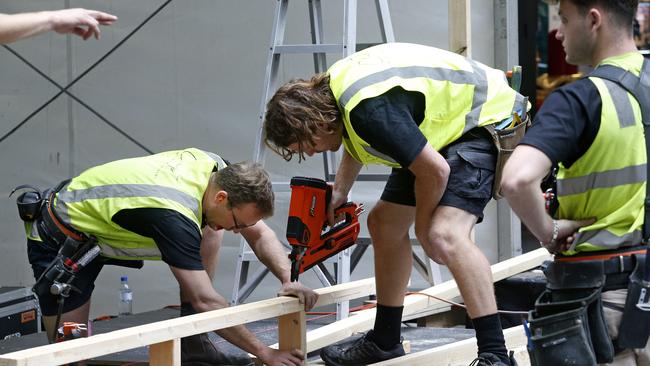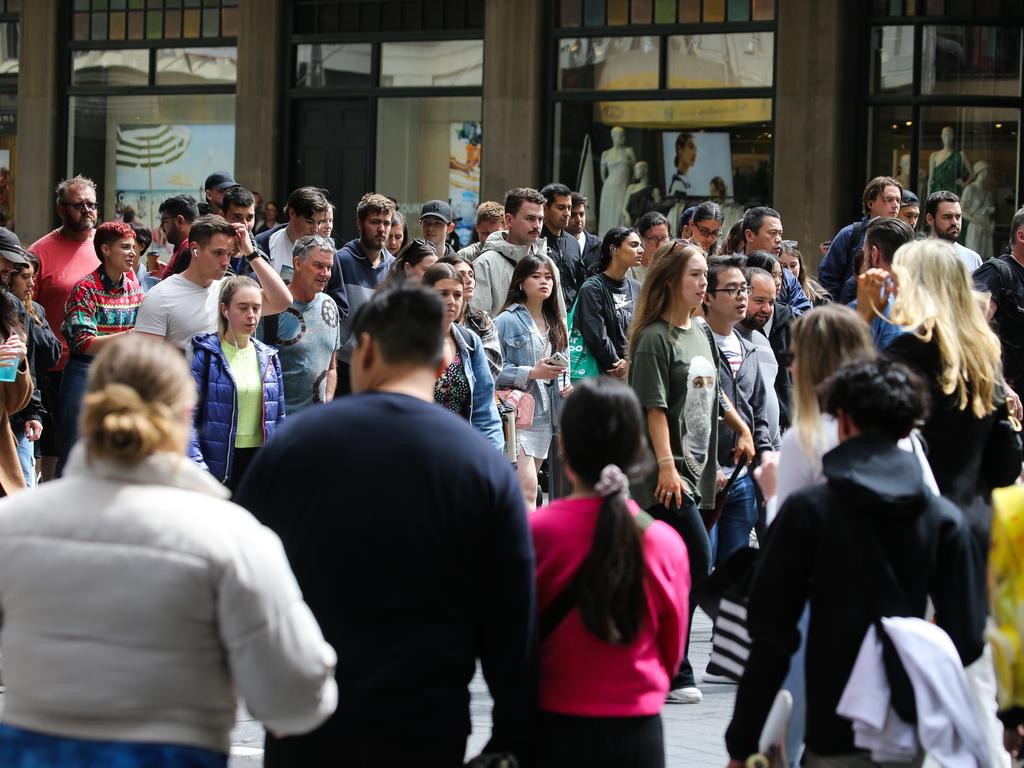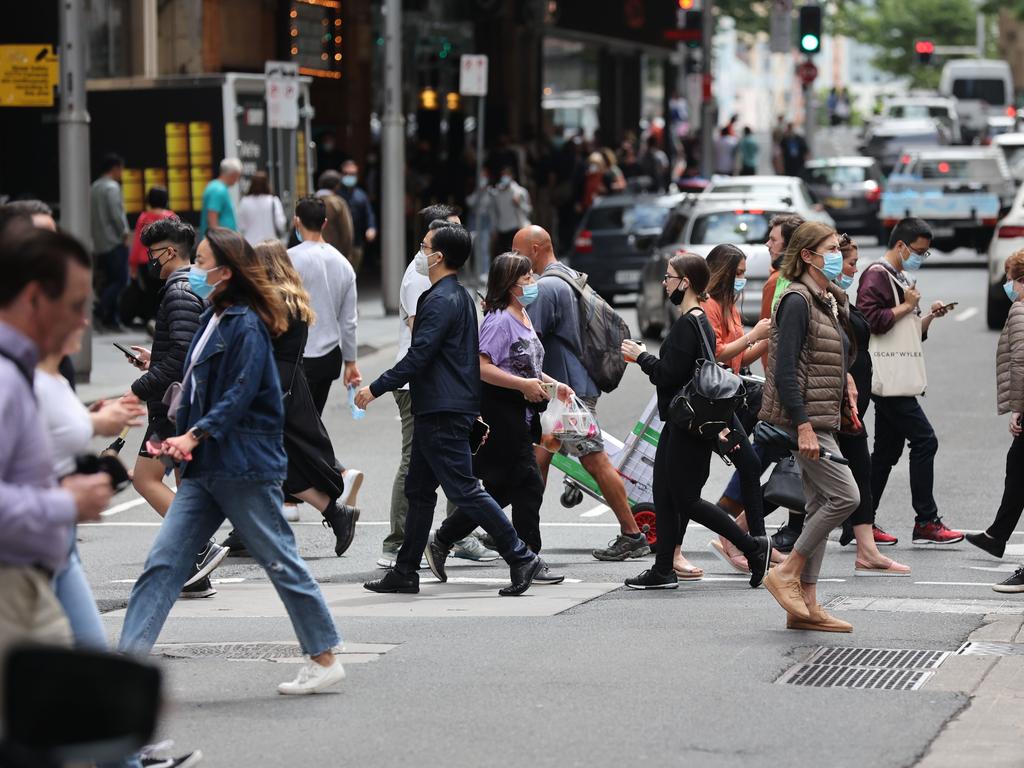Bumper jobs data threatens to dash prospect of early Reserve Bank rate cut
A surprise drop in the unemployment rate to 3.9 per cent in November has poured cold water on the prospect of a summer interest rate cut by the Reserve Bank.

A surprise drop in the unemployment rate to 3.9 per cent last month has poured cold water on the prospect of a summer interest rate cut by the Reserve Bank.
Following the release of job figures on Thursday, which showed employment increased by 35,600 in November, bond traders trimmed their rate cut bets, delaying a quarter-point rate cut to the central bank’s May board meeting, three days after a federal election must be held.
The retreat comes after RBA governor Michele Bullock earlier this week revived Labor’s hopes of a pre-poll interest rate cut, revealing the board was now more confident that inflation was easing and abandoning previous threats of ratcheting up interest rates even higher to quell a resurgence in consumer prices.
To improve its standing among voters who have experienced a sharp erosion of their living standards, the Albanese government is hoping the central bank will cut its cash rate from a 12-year high of 4.35 per cent, perhaps as early as mid-February when its board next meets.
Anthony Albanese must call an election to be held on or before May 17.
But with unemployment dipping to a seven-month low, below forecasters’ expectations of an increase to 4.2 per cent, economists warned that the odds of imminent interest rate relief were again tenuous.
“The strong figures mean it is less likely the Reserve Bank of Australia will cut rates in February,” KPMG chief economist Brendan Rynne said, attributing the job gains to elevated public spending, alongside increased demand for infrastructure and healthcare.
Australia’s red-hot jobs market is among the tightest of all advanced economies, with the unemployment rate lower only in Japan and South Korea among all the G20 nations.
Welcoming the bumper jobs figures, Jim Chalmers said the decline in the unemployment rate was helping to achieve a “soft landing” – that is, a decline in inflation without causing an economic downturn.
“More jobs and better pay are key parts of our plan to help ease cost-of-living pressures,” the Treasurer said.
Further indicating the strength of the jobs market was the increase in full-time employment, which rose by 52,600, partially offset by a decline in part-time employment of 17,000.
The number of unemployed people decreased by 27,000, the ABS figures show.
Amid strong population growth fuelled by still-high levels of immigration, 39,000 new jobs need to be created every month to keep the unemployment and participation rate stable.
The participation rate – the share of Australia’s working-age population in work or looking for a job – weakened slightly, dipping to 67 per cent, but still remained near its record high of 67.2 per cent.
With the unemployment rate averaging 4 per cent through the December quarter so far, it is almost certain to undershoot the RBA’s own forecasts which project an increase to 4.3 per cent by year’s end.
From there, the RBA expects the key jobless measure to stabilise at 4.5 per cent by December 2025 which it believes is in line with its estimate of so-called “full employment” – the maximum level consistent with holding inflation inside its 2 to 3 per cent target band.
The overwhelming share of new hiring in recent months has come from the public sector and other roles predominantly funded by the taxpayer, with the expansion aided by record government spending.
By contrast, employment growth in the private sector has been far weaker, as business has cut back on hiring amid anaemic economic activity.
“The spike in taxpayer-funded jobs is now coming at the expense of growth in the private sector,” opposition Treasury spokesman Angus Taylor said.
Jarden economist Anthony Malouf said the creation of 640,000 so-called “non-market” roles, covering education, health and the public sectors, had accounted for 84 per cent of the job gains since the start of 2023.
“These jobs are relatively less productive, which poses upside risk to wages and inflation,” Mr Malouf said.
Separate ABS figures released last week show growth in government-aligned roles is running at four times the rate in the private sector, and now accounts for approximately 30 per cent of total employment – a record high.
With public spending expected to ramp up ahead of the federal election, and Dr Chalmers already foreshadowing additional expenditure in next Wednesday’s mid-year budget update, RBC Capital Markets chief economist Su-Lin Ong said there were few signs that the growth in government-aligned jobs would slow.
“In part, this underpins our expectation for a shallow RBA easing cycle in 2025,” Ms Ong said, tipping a rate reduction in May.
Ms Bullock has pointed to the ongoing strength of the jobs market as one of reasons that the RBA has been unable to cut interest rates, even as other central banks across advanced economies have started easing monetary policy at speed.
Last month, the RBA noted that the recent run of labour force data – including measures of underemployment, job advertisements and youth unemployment – indicated that the weakening in the labour market “might have begun to stall or modestly reverse”.
Despite the stronger-than-expected jobs numbers, analysts argued the recent dovish tilt by the RBA board did not preclude it from cutting rates after it took confidence from recent inflation, wages and GDP data.
“It is quite possible that low inflation will still allow a lower cash rate, even if today’s reported unemployment rate does not suggest that the economy requires one,” Noruma senior economist Andrew Ticehurst said.






To join the conversation, please log in. Don't have an account? Register
Join the conversation, you are commenting as Logout